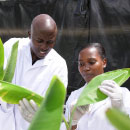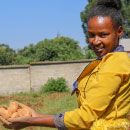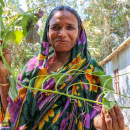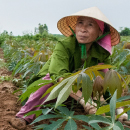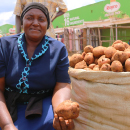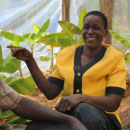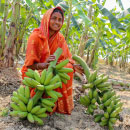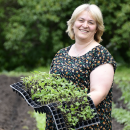RTB researchers in Ethiopia undertook a participatory evaluation with women and men farmers to look at some new potato varieties.
The farmers turned out to have a very different idea of what makes a good potato compared to the breeders. Women and men differed in their assessments too. While breeders need to pay more attention to the traits farmers prefer, farmers may need help to understand why breeders favor the traits they do.
The research had two aims. First, to capture the traits that farmers, women and men, look for in new potato varieties. Second, to develop a method and user guide that could be used by anyone involved in participatory variety selection (PVS) to gather comparable data.
Several new potato varieties bred by the International Potato Center (CIP) were grown in a series of trials with farmers in Amhara in Ethiopia. Women and men separately assessed the varieties while they were growing, at harvest, and 45 and 90 days after harvest. The trait women valued most, probably because they are responsible for household food security, was long storage, with high yield second. Men valued high yield and freedom from pests and diseases as their equal top traits, and were less interested in long storage. Both agreed that good taste was important, but only men wanted large tubers and many eyes on the tuber, because large tubers fetch a higher price, while many eyes mean that a tuber can supply lots of seed. Only women mentioned good cooking quality, moderate size and few deep eyes, which makes peeling easier and less wasteful, but these were not very important traits for them.
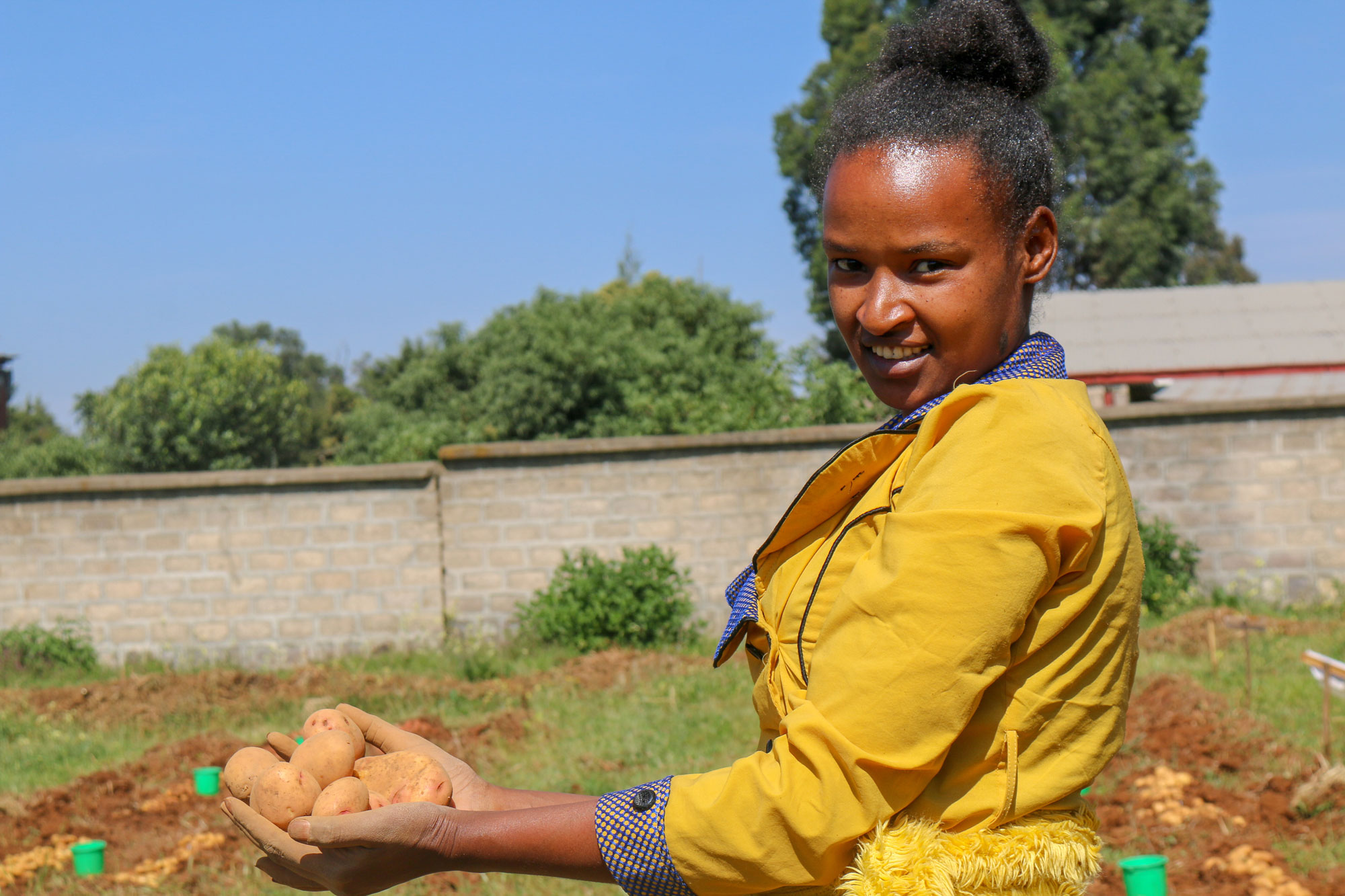
Women and men both agreed which of the new varieties was their favorite, but breeders specifically rejected this variety, because too many of the potatoes were cracked. For breeders, this characteristic indicates that the variety may be less able to cope with dry spells and more prone to rotting, late blight and nematodes, as well as shorter shelf life. Farmers likely do not know that cracking is a potential defect, so there may be some scope for breeders to inform farmers about characteristics that the farmers overlook. Likewise, the study noted that some women may overlook pest and disease resistance while considering culinary traits.
Another important factor is that PVS does not mean that each farmer gets their preferred varieties going forward. The goal of the exercise is to provide a selection of varieties that can meet the varied preferences of different groups. If women and men clearly differ in their preference for a particular variety, some mechanism must be devised to ensure that each group’s preferred varieties are provided as options. Empowering women in male-headed households to exert some influence on the choice of varieties, quite apart from giving women what they want, can increase on-farm biodiversity and contribute to resilience.
Crucially, though, while farmers have something to learn from breeders, breeders also need to learn from farmers. This kind of well-structured PVS, set out in a guide for trainers published by CIP, can go a long way to help farmers and breeders work together to choose the best new varieties for their conditions.

